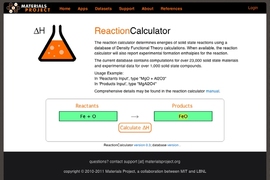“First-principles calculations have reached the point of accuracy where many materials properties, relevant for photovoltaics, batteries and thermoelectrics, can be reliably predicted,” says Gerbrand Ceder, an MIT professor of materials science and engineering and founder of the Materials Project.
A better battery — one that is cheaper and has more power and energy while being safe — could finally make possible the dream of an electric vehicle reaching performance and cost parity with a gasoline-powered car. But beyond batteries, novel materials could transform a host of other industries, from food packaging to buildings. For example, the Materials Project is working with several entities interested in making stronger, corrosion-resistant, lightweight aluminum alloys, which could make possible lighter vehicles and airplanes.
“Our vision is for this tool to become a dynamic ‘Google’ of material properties, which continually grows and changes as more users come on board to analyze the results, verify against experiments and increase their knowledge,” says Kristin Persson, a Berkeley Lab chemist and one of the founding scientists behind the Materials Project. “So many scientists can benefit from this type of screening. Considering the demand for innovative clean energy technology, we needed most of these materials yesterday.”
The Materials Project employs an approach to materials science inspired by genomics. But rather than sequencing genomes, researchers are using supercomputers to characterize the properties of inorganic compounds, such as their stability, voltage, capacity, and oxidation state. The results are then organized into a database with a user-friendly web interface that gives all researchers free and easy access and searching.
“Materials innovation today is largely done by intuition, which is based on the experience of single investigators,” says Persson, who works in Berkeley Lab’s Environmental Energy Technologies Division. “The lack of comprehensive knowledge of materials, organized for easy analysis and rational design, is one of the foremost reasons for the long process time in materials discovery.”
“The Materials Project represents the next generation of the original Materials Genome Project, developed by Ceder's team at MIT,” says Shreyas Cholia, a NERSC computer engineer who helped develop the Materials Project tool. “The core science team worked with developers from NERSC and Berkeley Lab’s Computational Research Division to expand this tool into a more permanent, flexible and scalable data service built on top of rich modern web interfaces and state-of-the-art NoSQL database technology.”
In addition to Persson and Cholia, other Berkeley Lab contributors to this project include Michael Kocher, Daniel Gunter, Annette Greiner, David Skinner and David Bailey. MIT collaborators include Ceder, Shyue-Ping Ong, Anubhav Jain, Geoffroy Hautier and Evgueni Chtykov.
This story was adapted from a NERSC press release. Read the full version







